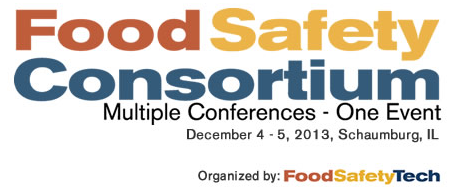A recommendation of “No Action” at the CFP (Conference for Food Protection) can be viewed as a strike out and to continue the baseball metaphor, Handwashing For Life went 0 for 7 on the issues submitted in 2014. We thought at least one would be accepted but all were presented as a foundation for 2016. […]
What is a Better Number, 3% or 80%?
Most people would respond saying “That depends on what those numbers correlate to”. Let’s put these numbers into perspective. John M. Boyce, MD, of the Hospital of Saint Raphael in New Haven, CONN and clinical professor of medicine at Yale University School of Medicine (2011) states that less than 1 percent to 3 percent of […]
The 2014 Conference For Food Protection
Summary of proposed hand hygiene solutions The biennial meeting of The Conference For Food Protection (CFP) opens this week in Orlando. So many disparate views are represented within the ranks of the CFP but all share a single goal – to protect home and away-from-home public health. Breakdowns in hand hygiene systems remain perhaps the […]
The Seven Sins of Observation – Are we in the Dark Ages?
A decade ago direct observation of Health Care Workers (HCW’s) by their peers became the “Gold Standard” in the health care community to benchmark hand hygiene compliance. Although the spread of Nosocomial Infections or commonly called Health-Care Associated Infections (HAI’s) is a complex problem, it is widely accepted that up to 50% of HAI’s are […]
The Unwritten Food Code
The ‘prescriptive’ nature of the food code is now being understood by local health officials as: ‘The health authority prescribes how a task is done and the operator is responsible to do the task as prescribed.’ This interpretation, which differs from the traditional approach of Food Code which defined the minimum standard needed and operators […]
The Written Food Code: Prescription vs. Innovation
How the operator-interpreted code blurs food safety responsibility. Health authorities help operators prepare and serve safe food. These agencies take their guidance from the FDA’s written Model Food Code which sets out minimum standards in a 600+ page tome. Every successive edition of the Code becomes more prescriptive, leaving less choice available for the operator. […]
Michelin 2-Star Norovirus in London
“… staff told to wash their hands more often.” After the closing of another world-class restaurant due to a norovirus outbreak, a piece of world-class food safety advice was passed along by London’s health inspectors as reported in The Guardian newspaper: “Environmental health officers have told staff at the two Michelin star restaurant to wash […]
Fixing Food Code Flaws
Risk vs. Inspection Unintended consequences are many as the FDA’s Model Food Code strives to further protect public health. The operators have prime accountability for serving safe food and the more than 30,000 health inspectors look to help them. Both have the same goal. It can be a team effort and often is. But there […]
Stranger, Danger!
As children we were taught to shout the phrase “Stranger, Danger!” to alert those around us of unfamiliar people in our surroundings. As a means of infection control, perhaps we should yell “Stranger, Danger” when visitors enter our healthcare facilities. While visiting a dear friend recently in a skilled nursing facility, I was surprised that […]
Consortium’s Inaugural Success Ignites Planning for 2014
Handwashing For Life has been looking for a trade event that would be more risk-based and inclusive of the foodservice audience. Food Safety Tech has responded with a strong Foodservice/Retail commitment. The size of the show with a focus on education provided an intimacy that nurtured productive one-on-one exchanges. From the workshops and the Handwashing […]



